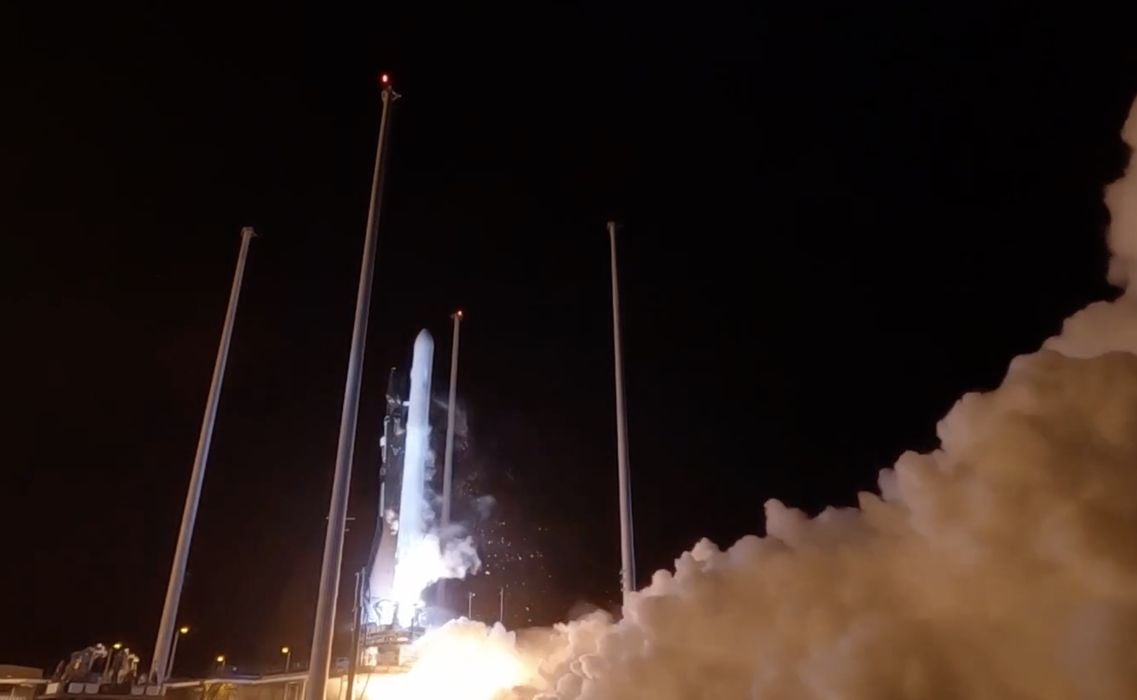
It seems that Relativity Space has abandoned their goal of 3D printing an entire rocket.
The California company made a big splash a few years ago with their unprecedented notion to 3D print an entire rocket. Not just the engine, but the fairing and most other parts. This approach would allow the company to rapidly iterate designs: just print it again. There would theoretically be far less assembly required, and the decrease in connectors would lower the rocket’s weight.
They developed an in-house large-format metal 3D printer designed to print rockets, called “Stargate”. A rocket was designed and printed, their first vehicle, Terran-1.
In 2023 Terran-1 actually flew, mostly successfully. The first stage worked perfectly, but a problem on the second stage prevented the payload from reaching orbit. There had been much concern about the 3D printed rocket approach, as it was possible the 3D printed fuselage might crack open along layer lines when under pressure.
This didn’t happen during the test flight, confirming the feasibility of 3D printed rocketry.
That all sounds very good. But then something happened.
The company announced they were discontinuing the Terran-1 and moving to a new design, the Terran-R. The “R” was to be far bigger, even bigger than rival SpaceX’s Falcon 9 system. However, it was also not going to use nearly as much 3D printing. The fuselage would be made instead from standard aluminum sheets.
At the time of the change, I wondered whether this shift away from 3D printing was dictated by the sheer size of the Terran-R, or whether there was some difficulty in the 3D printing process. Relativity Space wasn’t answering this question.
Now we’ve learned more about this change in an article in Are Technica by Eric Berger.
Berger tracked down a suspicious image posted by Relativity Space in which they implied they’ve produced a huge fairing for the Terran-R. However, Berger’s sleuthing revealed that the image was actually of a fairing for ESA’s Ariane 6 rocket.
Berger interviewed one of Relativity Space’s founders and revealed problems with the 3D printed approach:
“As for 3D printing, Relativity had experienced some growing pains with issues like cracking. The company planned to lean heavily into 3D printing for engines and other parts of the Terran R rocket. But Ellis said he could no longer claim that Terran R would be 90 percent additively manufactured.”
There’s more:
”According to internal documents reviewed by Ars, Relativity had difficulty printing pressure domes for the Terran R rocket. One of the documents references a ‘large buckling event’ with a printed dome. As a result, Relativity seems likely to purchase these pressure domes from a European aerospace company.”
Because of these issues, it appears that Relativity Space is drifting towards a design that is quite similar to the Ariane 6, likely to take advantage of parallel manufacturing.
Unfortunately this will further decrease the proportion of 3D printed parts in the Terran-R.
This is not the greatest news for 3D printing, as it confirms the infeasibility of fully 3D printed rocketry, at least with the approach used by Relativity Space. While there have been tremendous applications of metal 3D printing in space applications, there are also limits to what is possible.
Via Ars Technica and Relativity Space
